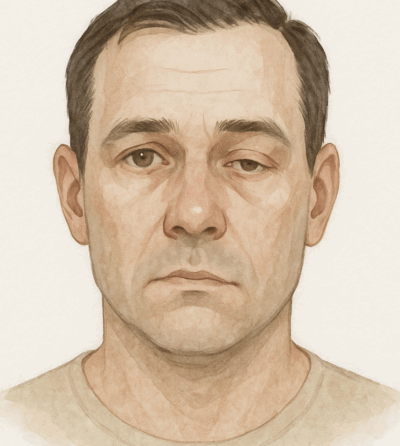Bell’s Palsy Massage
A Bell’s Palsy Massage is a therapeutic technique focused on improving facial muscle function, reducing discomfort, and supporting recovery in individuals with Bell’s palsy. This condition is a sudden paralysis or weakness of the facial muscles due to facial nerve inflammation. Massage helps stimulate circulation, maintain muscle tone, and support functional symmetry as the nerve recovers.
Signs & Symptoms
-
Sudden weakness or paralysis of facial muscles, typically one side
-
Drooping of the mouth, eyelid, or eyebrow on the affected side
-
Difficulty closing the eye, smiling, or eating
-
Loss of facial expression and uneven appearance
-
Facial pain, stiffness, or sensitivity (sometimes post-viral)
-
Changes in tear and saliva production; possible taste changes.
Contraindications
-
Avoid vigorous or deep massage if facial sensation is abnormal, acute skin infection, open sores, or unresolved trauma is present
-
Caution in those with acute neurological signs, uncontrolled pain, or unresolved diagnosis; seek medical advice
-
Do not use electrotherapy or strong heat modalities unless guided by a healthcare provider
-
Gentle techniques only and never force facial muscle movement if painful
Assessment
-
Confirm diagnosis, onset, and current phase of Bell’s palsy (acute, intermediate, chronic)
-
Observe asymmetry, drooping, and loss of voluntary facial movement
-
Palpate for muscle tightness, loss of tone, soreness, or areas compensating for weakness
-
Assess for synkinesis (involuntary movement) and secondary muscle tension
-
Client feedback is essential to gauge comfort and technique response.
Treatment
-
Gentle effleurage: slow, circular strokes with the fingertips over forehead, cheeks, mouth, and jaw to stimulate blood flow
-
Manual manipulation: gently “shape” the lips, cheeks, and eyebrows, encouraging movement and symmetry
-
Stretching: soft pressure to raise eyebrows, pucker lips, and support coordinated movement
-
Facial trigger point massage for discomfort, and moist heat applications (warm washcloth) after massage to enhance relaxation
-
Techniques done daily for several minutes; never force movements or apply strong pressure
-
Gradually add resistance or more focused work as voluntary movement returns.
Self Care
-
Perform daily self-massage of the entire face. Small, circular strokes with gentle pressure, spending extra time on weaker areas
-
Practice facial muscle exercises and stretches as taught by a physical or massage therapist
-
Use warm compresses to relax muscles (ensure skin health and avoid burns)
-
Maintain eye protection if eyelid closure is limited (lubricating drops, eye patch)
-
Follow home exercise recommendations and monitor for changes; consult provider for persistent weakness or worsening symptoms

